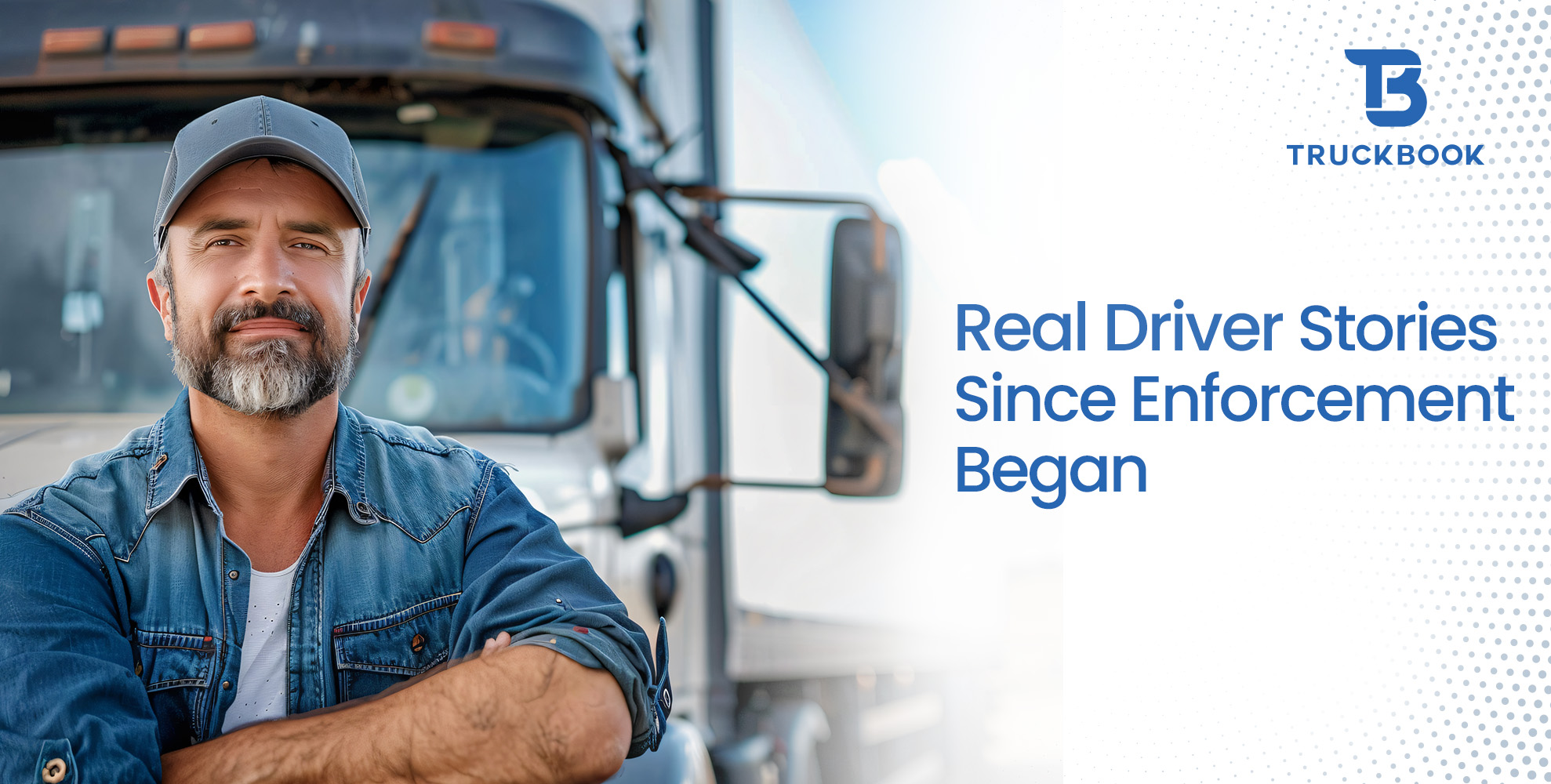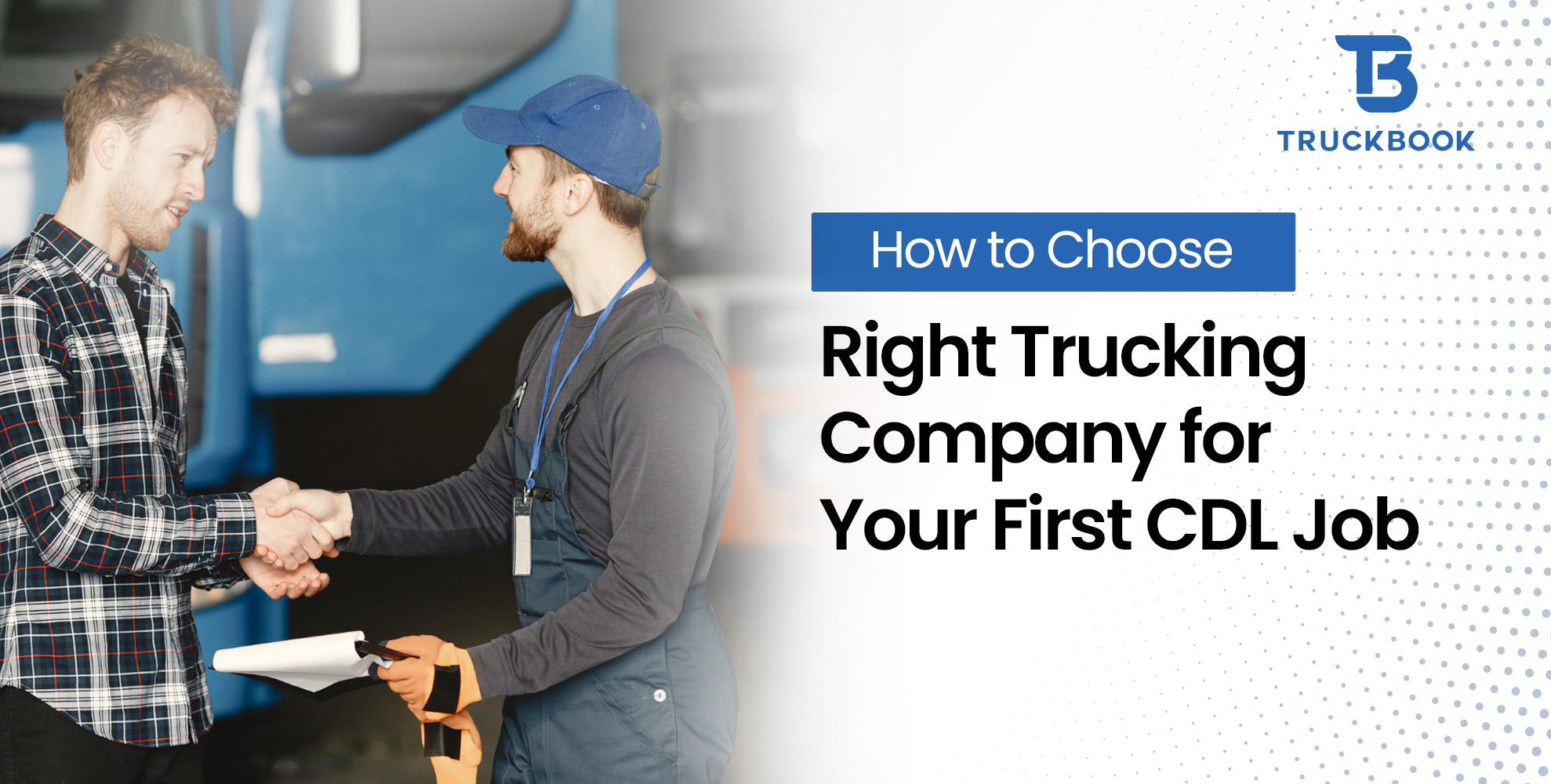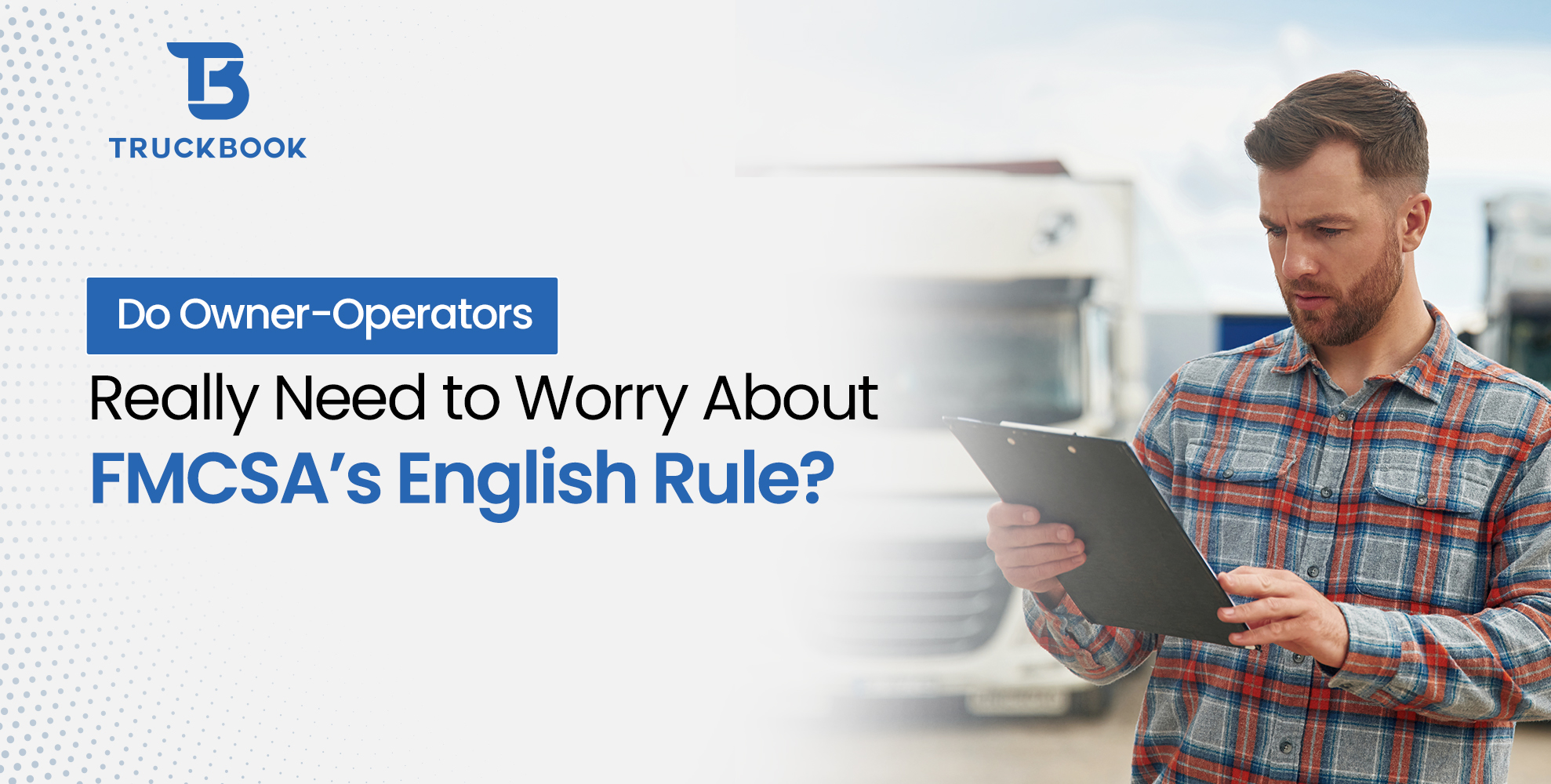When you think about booming industries in the US, you must be knowing just over 70% of all U.S. freight moves through trucks, which means that there’s always a demand for trucks and, more importantly, trucking companies.
Do you want to start a trucking Company? Thinking you want to do it is easy, but getting started can be confusing. You must know what forms you need, where you get them, and the order you need to complete them.
There is an abundance of factors to be considered, including a business plan, hiring employees, choosing your business entity, and securing financing.
This blog have put together all the information you need to start a successful trucking business.
How To Get Into Trucking Business
Before we get started, you need to answer two essential questions.
Do you plan to haul freight across state lines? If so, you’ll be hauling Interstate freight, and you need to get Motor Carrier Authority, referred to as MC Number. If not, you will be hauling intrastate freight within your state. Intrastate truck involves fewer requirements. However, those requirements vary by state.
Do you plan to drive a truck for your trucking company? If so, you’ll need a commercial driver’s license, referred to as CDL. To get your CDL, you can contact your state DMV to know more. Trucking company owners aren’t required to obtain a CDL, but any driver you hire for your trucking business will require a preferred CDL and a clear driving record.
To start a trucking business, you must go through multiple websites to complete the application requirements and registration. We have put together an easy checklist and other valuable resources to make it easy.
1. Compose A Business Plan
Once you decide to switch your career from a driver to becoming a trucking business owner or an owner-operator, your responsibilities grow exponentially. Writing a business plan helps you focus on your business vision.
A plan lays out the purpose of starting a business and who the business will serve. Briefly, it touches on how you will—operations strategy related to ‘how’ such as technology, staffing, and a business running system. Services you are going to offer. Market analysis, financial projections, and other strategies.
2. Get Your CDL Ready
Whether you choose to be an owner-operator or hire drivers for your company, both must need a commercial driving license (CDL), as required by the Federal Motor Carrier Safety Administration (FMCSA). As per the Commercial Motor Vehicle Safety Act of 1986 framed by the United States, CDL is considered to be one of the minimum requirements that individuals need to obtain to drive vehicles across Class A, Class B, and Class C. To know more about these licenses take a look at CDL classes A, B, or C.
3. Register Your Business
The first and foremost thing you need to do is set up your trucking company’s Business Entity and a Unique Business Name.
There are four more main entity types:
- Sole Proprietorship
- Partnership
- Limited Liability Company
- Corporation
You should always research every aspect of your business and decide which entity is best for your business goals.
Alongside registering your business, be sure you choose a unique business name. Make sure the name communicates your brand specialty and personality.
List down the names in your mind to ensure that the name is unique and not taken by others. Do a quick secretary of state and U.S. Patent and Trademark search to ensure the name you’re considering is available for use.
4. Obtain the Necessary Licenses and Permits
To make sure your business is operating legally, you will want to look into business licenses, permits, and insurance.
Before you start operating, your company needs to comply with these federal and state government regulations:
EIN Number
After you set up your business entity, you will file for an Employee Identification Number (EIN), also known as a Federal Tax Identification Number. An EIN is used to identify a business entity. The EIN is an ID number assigned to your business for federal taxes and reporting purposes.
Getting your EIN is a simple process. You can check their website, and it’s free!
DOT & MC Number
The most significant part of starting a business or becoming an owner or owner-operator is registering for authority with the Federal Motor Carrier Safety Administration (FMCSA). This is where you will get a Department of Transportation and Motor Carrier Operating Authority, or DOT and MC number.
The DOT number is required for all carrier vehicles weighing more than a certain amount transporting property or people and commencing and operating between state lines.
The MC number allows trucking companies to haul freight across state lines legally. The cost of applying for common-hire motor carrier authority is $300. Applying for authority is just a first step; to get started you will have to wait to get active authority.
You’ll need ‘Proof of Insurance and your BOC-3 filing for your authority to get activated.
Drive Under TruckBook Authority
Getting your MC can be a hassle and time taking. We at TruckBook can help you get started within 24 hours and let you drive under our MC!
BOC-3 Filing
The BOC-3 filing appoints process agents for your trucking company. A process agent is a person who can receive legal documents for your trucking company in the affair of a lawsuit. You will need a process agent for every state in which you operate.
There are a lot of BOC-3 filing companies out. So, you should always research and find a reputed one. The cost may vary depending on the company you choose. The estimated cost starts from as low as $50 and can go up.
IFTA
Now it’s time to register for quarterly fuel taxes through the International Fuel Tax Agreement (IFTA)
Before filing quarterly fuel taxes, you must register with your state agency that handles fuel taxes and order IFTA decals to put on your truck if your registration and cab decal costs vary.
Obtain Standard Carrier Alpha Codes
Standard Carrier Alpha Codes (SCAC) is a unique identification code developed by NMFTA.
The National Motor Freight Traffic Association (NMFTA) assigns SCACs for all companies except those codes used for identification of freight containers not operating exclusively in North America, intermodal chassis and trailers, non-railroad owned rail cars, and railroads.
Register for UCR Permit and IRP
Another interstate commerce filing you will need is Unified Carrier Registration (UCR)
The cost of getting your UCR will depend on your fleet size. Just remember that the more trucks, the higher the annual filing fee.
Apportioned License Plates
You will also need to register your truck and get apportioned license plates. The International Registration Plan is an agreement between the US and Canadian provinces that allows them to divide payments of registration fees based on the distance traveled in the different jurisdictions. The cost of IRP will vary depending on their website.
State Registration
Make sure to check for other state-specific registration. Your state might have additional requirements, and you might also need intrastate authority.
Some states also required weight state tax permits to haul through states such as Kentucky, New Mexico, New York, and Oregon.
Heavy Vehicle Use Tax
The Federal Motor Carrier Safety Administration (FMCSA) charges an annual tax on trucks of more than 55,000 pounds to fund highway programs. You can pay your tax online using the IRS tax form.
5. Insurance Coverage
Next, you will need proof of liability insurance coverage within 90 days of filing for your authority. We also recommend getting cargo insurance as most shippers and brokers will need it before you can haul your freight for them.
You must do some research before you apply for coverage. Get quotes from different companies and choose the best option for your business.
Insurance is one of the most important things to do, but it also includes one of the highest upfront costs. To give you an idea, the initial down payment for a business can range from $4000 to $6000 with a monthly insurance payment of $1000 to $3000 per truck.
Trucking Insurance Might Include
- Commercial liability Insurance requires $750,000 in coverage, while some brokers require $1M in coverage
- Cargo Insurance Coverage: $100,000
- Physical Damage Coverage: covers no-fault accidents
- Non-Trucking Use: If you are hauling loads for another person or company
We are a little halfway through; if you’re overwhelmed by all the above steps, let us help!
If you have a CDL-A and a clear driving record, get on the road and start making money. Be your own boss while running under TruckBook authority, the #1 platform built for owner operators, and eliminate the headaches that slow you down and cost you money.
Are you thinking about the perks of becoming an owner-operator? We have made it easier for you. Please read our blog reasons to become an owner-operator for a better understanding.
Start Today! So that you can focus more on starting a successful trucking business and making more money.
6. Buy Or Lease A Truck and Trailer
In your business, you must include which type of truck you plan to haul and whether you are going to purchase or lease equipment. Purchasing a new truck means you need to make a substantial down payment, usually 10% to 25%, depending on whether you buy a new or used truck.
Leasing offers some advantages—mainly, the lessor will often cover your maintenance expenses. Leasing means that you agree to a contract to use a commercial truck. It’s an alternative strategy to purchasing a commercial truck but also different from renting. While rental truck agreements typically last days or weeks, leases are long-term agreements, typically lasting several years.
When deciding if you should lease a commercial vehicle, consider these factors:
- Length of time you require the vehicle for
- Costs of leasing vs. purchasing
- Tax implications
Whether you buy a truck or lease, you will likely need to find some way to finance your purchase.
7. Get Financing
Even if you have saved money to purchase a truck and trailer(s) plus licensing requirements and registrations, you need to identify sources and terms for financing and secure a line of credit. You may need to get a business loan or look for investors to fund your business to find resources such as employees, drivers, and dispatchers to keep your trucking business rolling.
Maintaining a good credit score and with the help of factoring companies, you can easily manage the financing. Reach out to your professional connections or community in the trucking industry this will definitely help in keep your trucking business run well.
Start Searching For Loads
Now, when you have established your trucking business it’s time to find loads and get your truck ready to haul freight. Finding the right load that suits your driving preferences can be a difficult task, but with an AI-Powered dispatching platform, TruckBook has made it simple and hassle-free. Read more about how owner operators find loads.
Our mobile-first platform empowers you to find top 10% freight and manage its dispatch lightning fast!
Wrapping It Up!
The trucking business is one of the most lucrative businesses in the US. To stay compliant you need to renew your CDL at least every four years and file IFTA quarterly tax returns. In addition, you need to keep a track of your hours of service every 24 hours.
As a new business owner or owner-operator, however, it may take time. But never let these legal requirements and financial plans stop you from owning your own new trucking business. With the increasing demand for drivers in the coming ten years, owner-operators are getting financial and leasing options with less-than-perfect credit scores.
Make the right plan, licensure, and financing in place, you too can get the wheels rolling on your trucking business.
Once you are ready to start Download the TruckBook app today! Grow your business with us, and get free access to 50k+ loads from multiple load boards.








